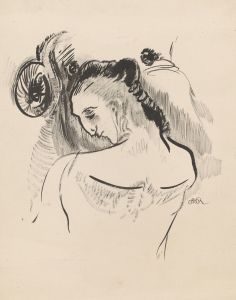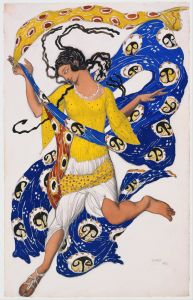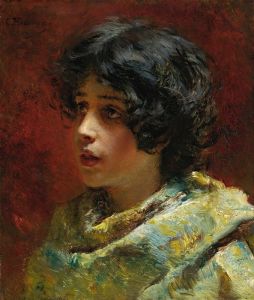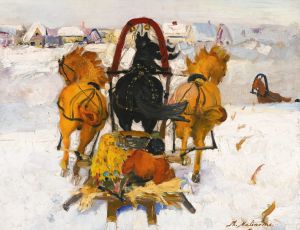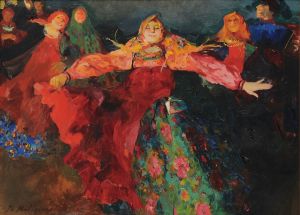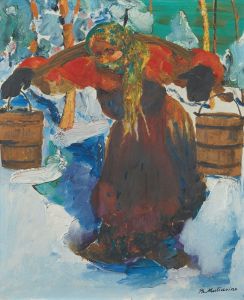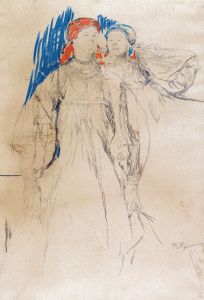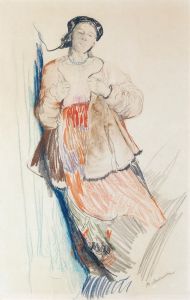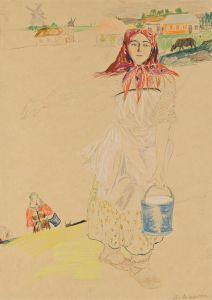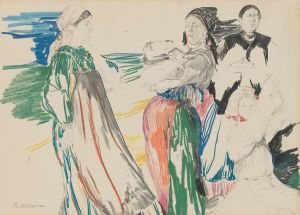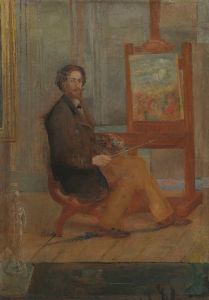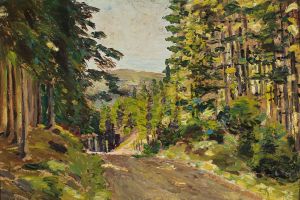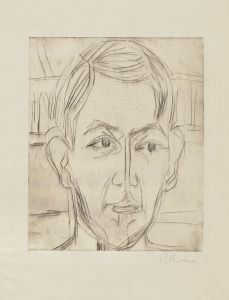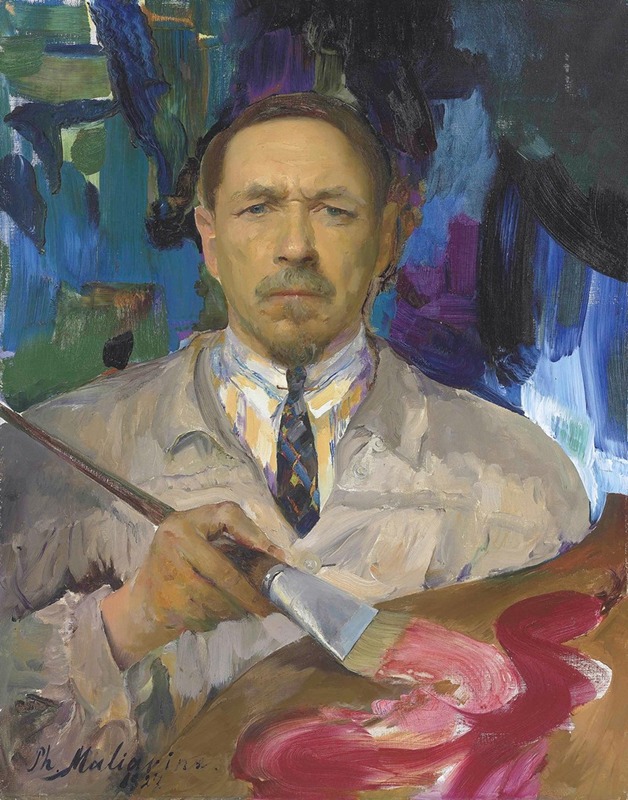
Self-portrait
A hand-painted replica of Filipp Malyavin’s masterpiece Self-portrait, meticulously crafted by professional artists to capture the true essence of the original. Each piece is created with museum-quality canvas and rare mineral pigments, carefully painted by experienced artists with delicate brushstrokes and rich, layered colors to perfectly recreate the texture of the original artwork. Unlike machine-printed reproductions, this hand-painted version brings the painting to life, infused with the artist’s emotions and skill in every stroke. Whether for personal collection or home decoration, it instantly elevates the artistic atmosphere of any space.
Filipp Malyavin was a Russian painter known for his vibrant and expressive works, often depicting Russian peasant life. His self-portrait, like many of his other works, reflects his unique style and artistic vision. However, detailed information specifically about a self-portrait by Filipp Malyavin is not readily available in public records or widely recognized art historical sources.
Malyavin was born in 1869 in the village of Kazanka in the Samara Governorate of the Russian Empire. He initially trained as an icon painter, which was a common starting point for many Russian artists of his time. His early exposure to religious art likely influenced his later works, which often exhibit a strong sense of color and composition.
In 1891, Malyavin moved to St. Petersburg to study at the Imperial Academy of Arts. There, he studied under the tutelage of Ilya Repin, one of Russia's most celebrated painters. Repin's influence is evident in Malyavin's work, particularly in his use of bold colors and dynamic compositions. Malyavin's paintings often feature large, swirling forms and a vivid palette, characteristics that became his signature style.
Malyavin gained significant recognition for his painting "Laughter" in 1899, which was exhibited at the 27th exhibition of the Peredvizhniki, a group of Russian realist artists. The painting was notable for its depiction of Russian peasant women in bright, swirling garments, capturing a sense of movement and vitality. This work established Malyavin as a prominent figure in Russian art.
Throughout his career, Malyavin continued to explore themes of Russian peasant life, often focusing on the vibrancy and resilience of rural communities. His works are characterized by their expressive use of color and dynamic compositions, which convey a sense of energy and emotion.
While specific details about a self-portrait by Malyavin are not extensively documented, it is likely that such a work would reflect the same stylistic elements found in his other paintings. Malyavin's self-portraits, if they exist, would likely capture his introspective nature and his fascination with color and form.
Malyavin's contributions to Russian art were significant, and his works continue to be celebrated for their boldness and originality. He spent the latter part of his life in France, where he continued to paint until his death in 1940. His legacy is preserved in various collections, including the State Tretyakov Gallery in Moscow and the Russian Museum in St. Petersburg.
In summary, while specific information about a self-portrait by Filipp Malyavin is limited, his overall body of work and his impact on Russian art are well-documented. His paintings remain a testament to his skill and creativity, capturing the spirit and vitality of Russian life through his unique artistic lens.





